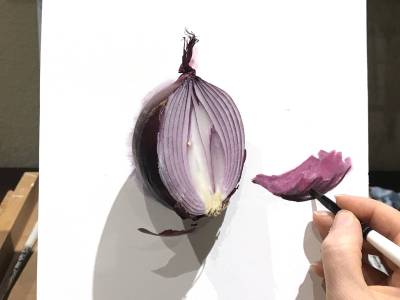
This is a very real painting of an onion I had sitting around just for this occasion and not an onion skewered to the canvas.
Like many of you, I recently returned home from IX full of inspiration and ideas to ponder. It was a week filled with conversation and art, and a few of those conversations left me considering how the two are related. Similar to getting to know someone over one or multiple conversations, a piece of art is created with layers of familiarity, from superficial and accessible to intimate and honest. On the other side of the conversation, these layers are unraveled in the viewer’s time, but only as far as they are interested in or able to go.
Similar to small-talk, I think of the first layer as a ground-level starting point, accessible and clear to everyone. Most people viewing your artwork will never get past this…they will glance to determine if a closer look is warranted, judging whether subject matter, color palette, mark-making, etc are to their taste. It is important that artwork not be like discussing weather: attempting to be agreeable, meet expectations, or appeal to everyone, and in doing so saying nothing about your own tastes or interests. Just as small-talk graduates to more interesting and meaningful conversation, if you hit it off, the viewer may look longer and mentally engage more with the artwork.
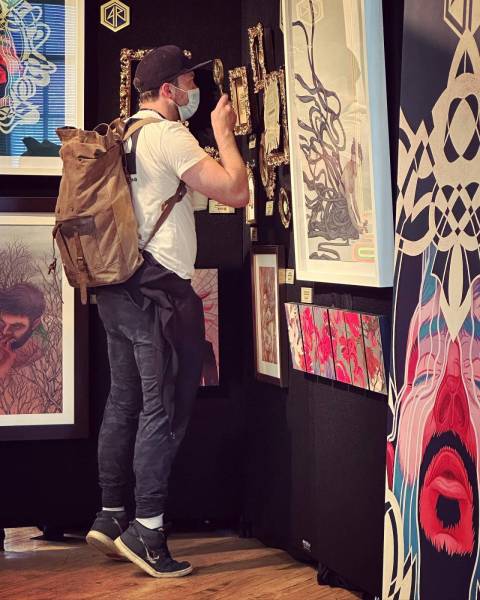
Aedan Roberts’ space in the Main Show at IX.
Although it is difficult to distinguish from the first layer, I believe the next one begins when a topic of mutual interest is found. When a favorite book is brought up, those who have not read the book will disengage, and those who have passion or insight become more invested. In art, these are shared symbols, stories, and themes, and may be obscure or well-known. Those with knowledge or interest in Greek mythology will recognize the pinecone-tipped thyrsus in this painting by Kaysha Siemens and identify the figure as a follower of Dionysus.
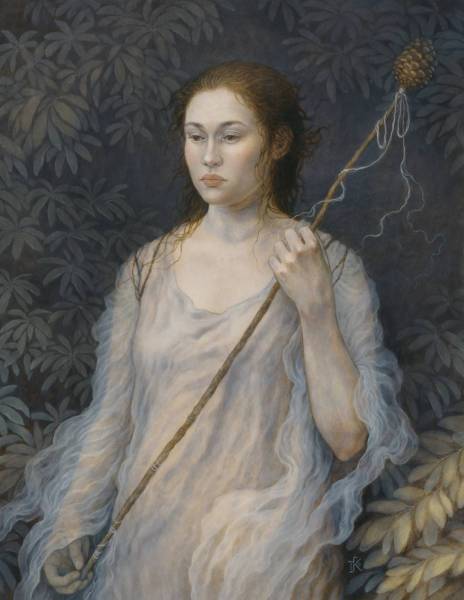
The Maenad by Kaysha Siemens
Flowers and birds both have been assigned symbolic meanings that differ from culture to culture. When viewing Jennifer Lesser’s paintings of dandelions and American goldfinches, we bring our own associations with each while considering their culturally-assigned meaning.
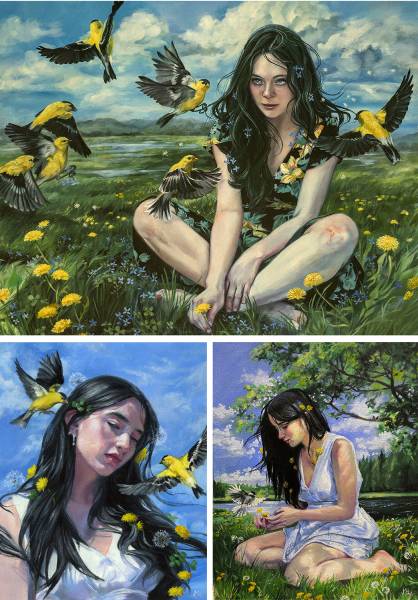
Calling, Dandelion Wish, & Summer by Jennifer Lesser
Sometimes this layer of conversation is exactly like bringing up a favorite book… the artwork professes a love of a story and shows it transformed through the artist’s eyes. Danny Schwartz was compelled to imagine an earlier period in Mandalorian history by the design of a suit of armor in the background of Solo: A Star Wars Story.

The Mandalorian by Danny Schwartz
The third layer moves past shared symbolism and common interest and gets personal. These inclusions in the artwork are very specific to the artist, and can be intuitive to the viewer, or too subtle to detect without guidance. Pouring, liquid lines can be found in a number of Aedan Roberts’ paintings, sometimes feeling dreary and oppressive and other times refreshing and precious. Water’s dichotomy as a life-giving, cleansing substance that can also drown you makes it a flexible symbol that Aedan bends to his needs with color, shape, and context.
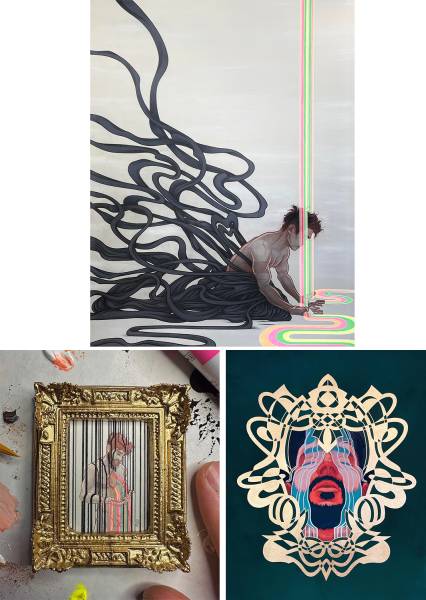
Fulgenti Effugium, Damnum Componens, & Mundare by Aedan Roberts
Many people will recognize a laurel wreath or crown…sometimes a symbol of unrequited love, sometimes of victory or importance, or as a symbol of protection from harm. However, only a botany enthusiast or someone who’s talked with Kaysha Siemens will know that she substitutes mountain laurel, a plant native to her home (and not actually laurel at all) for the Laurus nobilis used in Greece. The paintings are like wine grapes, the soil the vine grows in flavoring the fruit…except in this case, the vine decides what it loves most about its soil and how that flavor will be expressed.
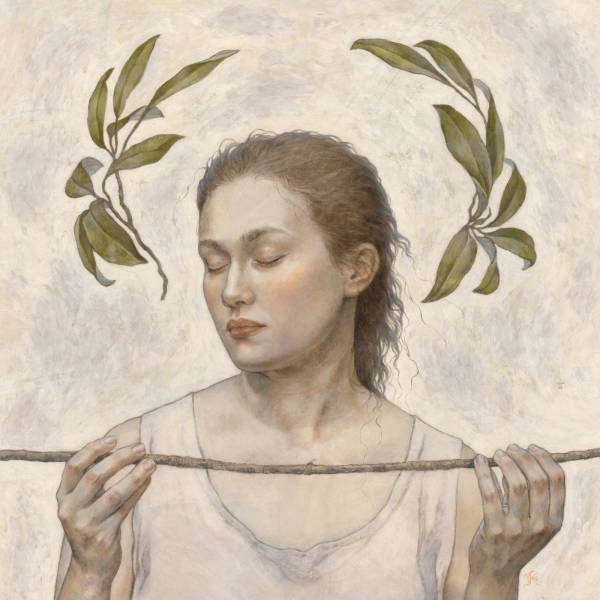
The Laurel Crown by Kaysha Siemens
Like when a friend shares something with you that few others know, being in on these secrets creates intimacy. Having this level of insight into a someone’s artwork is only possible if you’re paying attention to what the artist says about their work, or if you’ve had in-person conversations with them. They are a bridge between artist and viewer. There have been several times where I wasn’t particularly a fan of an artist’s work, but upon learning these kinds of insights, found that it transformed my perspective. Like an easter egg in a movie or a behind-the-scenes fact you know that your friends don’t, you feel smart, more informed, or like an insider. It changes your emotional relationship to a piece of art.
Symbols aside, another important way to achieve this relationship between your art and the viewer is to reward those who explore a piece for a longer period of time. That could be consciously designing the less important parts of the image to be beautiful or interesting in their own right, while not stealing attention, or it could be adding easter eggs that add layers to the narrative or message when found. If you’re making traditional work or large prints that you’d like to see hung in other people’s homes, you must give them reason to spend more time with it, things to find or appreciate long after it has come home with them. In Perfect Pick by Michael Blank, the less vital parts of the painting are rich with trickling water, growing mushrooms, bubbles on the water, swirling water, and malicious, watching faces.
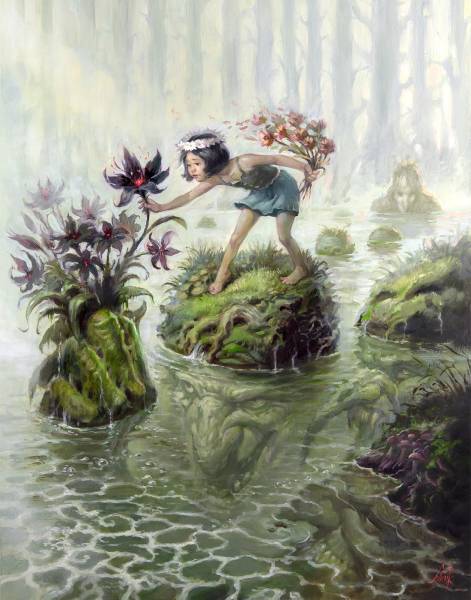
Perfect Pick by Michael Blank
The repetition of symbols or themes across multiple artworks builds consistency and recognizability in your work, and calls attention to those symbols in their repetition. If Jennifer Lesser only painted flowers the one time, it would be easier to dismiss them as ornamental and incidental, for example.
If there are layers beyond this, they would be like the last, but shared with fewer people or not at all. Some artists prefer to keep a few of these to themselves. Some may be quite private or difficult to articulate, but not exposing everything creates a sense of mystery and that there is more to be discovered…and leaves more space for the viewer to interpret for themselves.


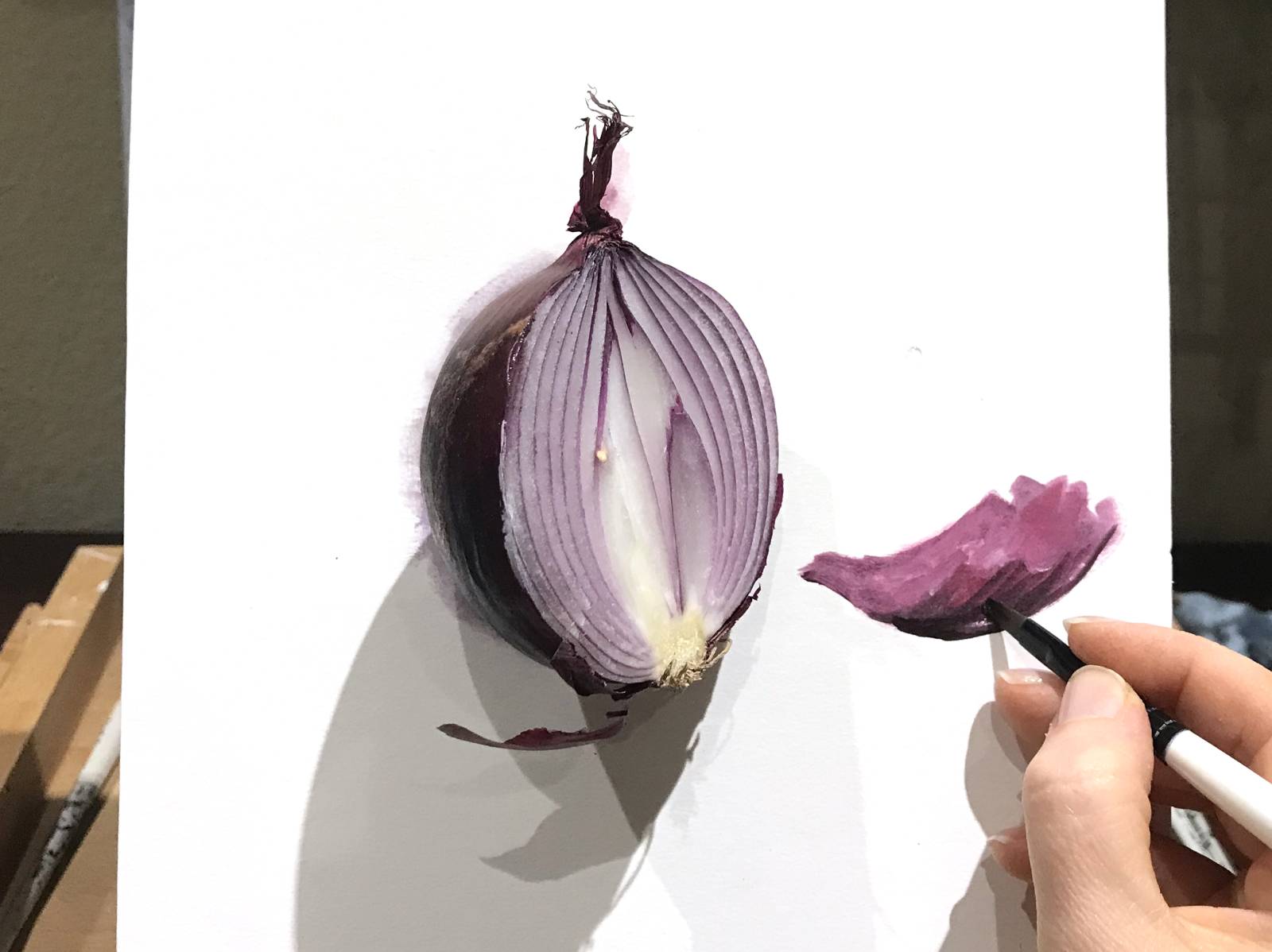
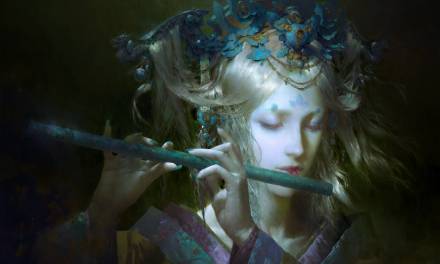



Art is what *YOU* make it. You want it to be an onion, for you, it’s an onion.
Throw that “Skewered Onion on Canvas” in a gallery and make a couple extra million bucks.
Jokes aside, a very nice and insightful article, Sarah!